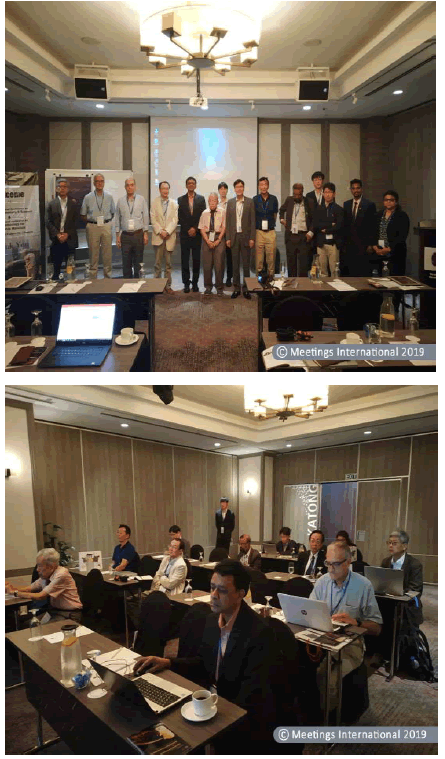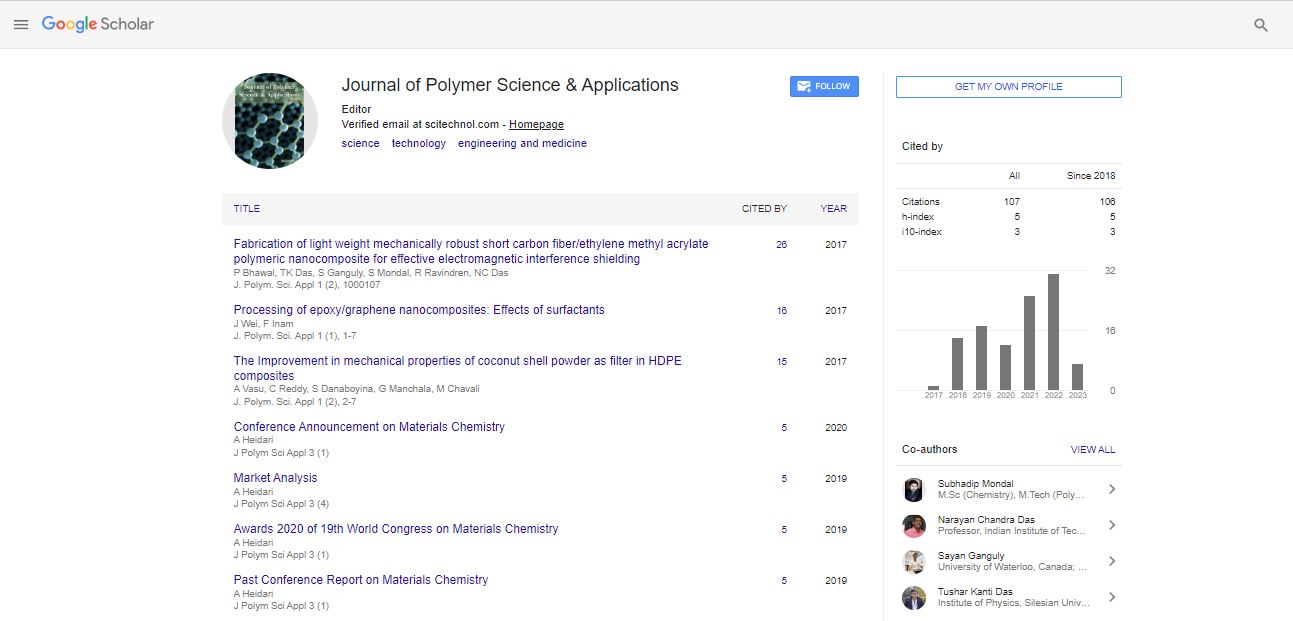2020 Conference Announcement, J Polym Sci Appl Vol: 3 Issue: 1
Announcement-materials chemistry-2020
Prof. Dr. Alireza Heidari
Professor,Chemistry, California South University, USA, E-mail: Scholar.Researcher.Scientist@gmail.com
Keywords: Biodegradable materials
The long-standing challenge of designing and constructing new crystalline solid-state materials from molecular building blocks is just beginning to be addressed with success. A conceptual approach that requires the use of secondary building units to direct the assembly of ordered frameworks epitomizes this process: we call this approach reticular synthesis. This chemistry has yielded materials designed to have predetermined structures, compositions and properties. In particular, highly porous frameworks held together by strong metal–oxygen–carbon bonds and with exceptionally large surface area and capacity for gas storage have been prepared and their pore metrics systematically varied and functionalized.
The interdisciplinary field of materials science, moreover for the most part named materials science and building is the arrangement and disclosure of new materials, particularly solids. The academic origination of materials science originate from the Enlightenment, when examiners began to use coherent theory from science, physical science, and working to get out of date, phenomenological perceptions in metallurgy and mineralogy. Emerging technologies are innovations whose improvement, down to earth applications, or both are still to a great extent undiscovered, with the end goal that they are allegorically raising into noticeable quality from a foundation of nonexistence or lack of clarity. These advancements are commonly new yet additionally incorporate more seasoned advances that are as yet dubious and moderately undeveloped in potential. Rising innovations are regularly seen as fit for changing the present state of affairs.
A material is characterized as a substance (frequently a strong, however other dense stages can be incorporated) that is planned to be utilized for specific applications. There are a heap of materials around us, they can be found in anything from structures to shuttle. Materials can by and large be additionally partitioned into two classes: crystalline and non-crystalline.
By analysing the importance of Materials Chemistry & Science, Meetings International is organizing 15th International Conference on Materials Chemistry & Science (Materials Chemistry 2020) during May 25-26,2020 Tokyo City, Japan based on the theme “Advancing excellence in Material Chemistry". Semiconductors are characterized by their remarkable electric conductive conduct, somewhere close to that of a transmitter and an encasing. The contrasts between these materials can be comprehended regarding the quantum states for electrons, every one of which may contain zero or one electron (by the Pauli Exclusion Principle).
Material Chemistry Congress 2019 has been concluded with the discussion on Material Chemistry and Development, Material Characterization, Energy Materials, Materials in Industry and Information Technology, Characterization and Testing of Materials, Materials Science and Engineering, Applied Materials Chemistry and many more with the companionship of our Organizing Committee Members, Keynote Speakers, Oral and Poster Presenters. With the unique feedbacks from Material Chemistry & Science 2019 and Material Chemistry Congress 2019 would like to announce the commencement 15th International Conference on Materials Chemistry & Science (Materials Chemistry 2020) during, May 25-26,2020 Tokyo City, Japan based on the theme "Advancing excellence in Material Chemistry ".

Anah Willson
For more details, connect to
Email: materialschemistry@insightsummits.com
Website: https://www.meetingsint.com/conferences/materials-chemistry
 Spanish
Spanish  Chinese
Chinese  Russian
Russian  German
German  French
French  Japanese
Japanese  Portuguese
Portuguese  Hindi
Hindi 